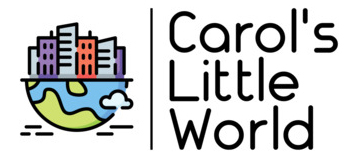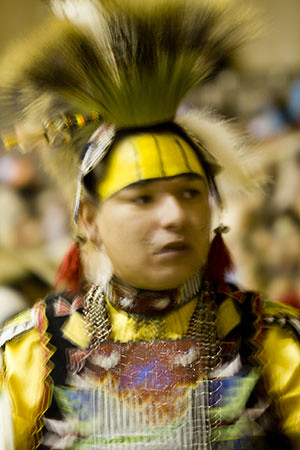I read a book review this weekend from a New York critic discussing the work of Edward Curtis. An interesting thing about Edward Curtis and his famous portraits of Native Americans is that he brought the conversation of the “manipulated image” to the forefront, long before we had tools like Photoshop to pollute the waters. Allow me to explain.
In the early 1900’s, Edward Curtis traveled the Western territories photographing the Native American people. According to the Wiki, he shot “over 40,000 photographic images from over 80 tribes” becoming known as the “Shadow Catcher.” Many of the native tribes did not want to be photographed (it is against their religious belief-they feel having a picture taken or having a sketch made is stealing a portion of their souls) but Curtis gained their trust over time and set out to document the Native peoples of the Western territories as best he could. He not only used a camera, but also used a wax drum to record sounds and transcribed writings from these people. It was a large (epic) photographic project on a grand scale, one which would cement Curtis in the history books as the photographer of Native Americans, yes, but one which would also drum up a lot of controversy.
Curtis, you see, had declared the Native Americans as a “vanishing race.” He was of the belief that the Natives were going to be killed off and that, eventually, there would be no Natives left. Their language would be lost, their culture lost, their people lost. All killed by the advancement of the white man. Because of the riff between the native cultures and the westward expanse of the white man’s territories, there are those who claim that Curtis manipulated, even staged, many of his images. They were not just “staged” in the typical sense of, say, staging a photographic image, but they were “staged” to elicit a specific response. (Picture the Native American tribal leader crying and you see what I am getting at here.) These sort of “manipulations” played well with the crowds and the funding for the projects and, perhaps, fed into the “white man’s guilt” aspect of how the white folks were treating the Native Americans at that point in history.
This topic is interesting in a number of ways. For starers, is an image to be considered “manipulated” or even “staged” if, say, it’s attempt is to circumvent the “normal” emotional response but instead fabricate a response? That is, if, say an image were designed to make you angry about something, is that to be considered a “manipulated” image (anymore than say a “Photoshopped” image is?) To pose it as a question, which image is more manipulated, one in which the subject is coaxed into crying and then shot (staged) to make it look like they are living in a sad situation/circumstance or one in which Photoshop “tears” are clone-stamped in? Ah, that’s an interesting question and one that I can’t really begin to answer here. All I can really do is pose the question and maybe think about this for a while (no?) Is there a “correct” answer to this? Is manipulation in any format to be tolerated by the media? How can it be avoided?
To say that Curtis “manipulated” his images is a bit of a stretch (IMHO.) In a way, *all* images are manipulated. We see what we want to see. As photographers, we do sort of “guide” an emotional response, even without tools like Photoshop. That’s kind of what we’re supposed to do, that’s kind of why they pay us the big bucks (so to speak. OK, well, maybe “medium-sized bucks” but you get the idea.) Images are all about manipulation, it’s just that now, in the modern era, we have a lot more tools that help us do this, so it naturally follows that there is now (in the modern era) a lot more talk about “manipulation” but it’s something we know has been going on since the humble beginnings of the medium. Photographers, and to some extent, photography itself, has *always* been about manipulation-people smile for photos even when they aren’t happy and we often look to shoot people in the best lighting conditions or even going out of our way to make them “look real” we try to frame the image based upon certain circumstances (those as guided by the hand of the photographer.) There really is no such thing as a non-manipulated image anymore than there is such a thing as a “real” drawing (in practical terms) although we do like to fool ourselves into thinking the great “truth” is really out there (somehow.) To put it another way, the “hand” of the photographer is always present in some way in each and every image we craft.
Maybe Curtis was off the mark in terms of a “vanishing race” but I would say not so fast there either. To come to his defense, the Indian culture *is* being erased, although, to also acknowledge the contrary point of view, maybe not as fast as Curtis initially suggested. That is to say, Indians *are* disappearing, their languages *are* being forgotten, they *have* been run off lands and swept aside by “White Man expansion” although, in all fairness, maybe not *quite* as fast as Curtis feared. Does that make him wrong? Does that invalidate his work in any way? Are his images now to be considered any more “manipulated” because he maybe got the timeline wrong? Again, more questions, few answers. (Isn’t photography grand? It always seems to do this to us!)
Perhaps too I should not be commenting about this at all, as I have a (somewhat) vested interest in this. I’m part Native American, yes, but I also grew up in the “White Man’s Culture” (as it were.) I have also considered Curtis to be one of my photographic heroes (I’ve always loved his work) and so it’s harder (if not impossible!) for me to examine his work with a more critical eye. To not do that though, to *not* look at his work and see that obvious (well, maybe obvious to some) manipulation, am I really appreciating his work? Am I doing it a dis-service of any kind? Not seeing the forest for the trees, maybe? Or, perhaps turning a blind eye to history and content and just seeing what it is I really want to see (maybe because I have a sort of “emotional” investment in Curtis’ work?) There is a tendency to do this as well-we tend to ignore flaws in images we basically enjoy, don’t we? We all have a tendency to look at work and see what it is we want to see. That’s just human nature, although it sort of “spills” over into photography as well.
These are really hard questions to ask and even harder, if not impossible to answer, but I thought it might be fitting to write about, at least in part, for today to maybe get the conversation started a bit. Perhaps this kind of critical thinking will help me find more depth in my own work and think more about what the future holds in terms of historic photographic work. Photography, as a medium, is really coming into its own now. We have more historical images than ever before, and we now have the “old guard” of photographers dying off, leaving behind troves of images that will continually “bubble up” these sorts of questions. Maybe more of us should start asking these kinds of questions now more than ever? I think it’s important to ask such questions and, especially so if photography is to become a truly historical medium (which it has been and will continue to do over time.)
As somebody who has sort of “been in the shoes” (read: a working photographer) it’s difficult, if not impossible to think about these sorts of things while you are shooting. When you go out shooting, at least for me, there’s the world around me, the great big “bubble” of a universe, yes, but there’s also the shot at hand. It’s hard to make tradeoffs, to even think outside that “bubble” and consider the “big picture” when you’re working, even a small project let alone one the size of the projects of Curtis’ undertaking. I’m fairly certain that, as a photographer, he wasn’t thinking about the “Big Picture” or any of this, he was just working in the field, trying to get the best images he could get at the time he got them. To put it another way, how could he possibly know that, say 100 years later, historians would be questioning the validity of his work when, back in that day, photography was simply not taken as a historical medium in any way at all? No, I think it’s pretty safe to say he was working as best he could to document what he saw when he saw it and working too to try and save a culture he thought needed help.
The rest? Why, that’s great fodder for historians and now even bloggers like me to question in the modern era. Photography as “history” is an interesting subject to me, although as a working photographer, it’s not one I get to ponder each and every day, as there are always more images to make and we must continue to move the medium forward, especially given the latest in technology advances but, as we do so, it’s sometimes good to look back at the historical context as well, as it can give new perspective to some of the current problems we now confront. It’s good being part of a new media but it also poses new questions and problems and issues of a historical context every once in a while as well, don’t you think?
Until next time…

